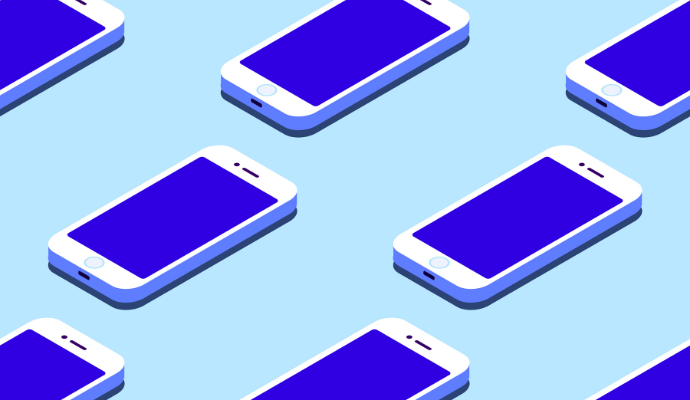Smartphone Patient Portal Use Lags mHealth Apps For Now
Smartphone patient portal use lags behind patient adoption of general smartphone mHealth apps, but need for mobile lab results and vaccine records could close that gap.

Source: Getty Images
- People aren’t using a smartphone patient portal nearly as much as they are using other mHealth apps on their mobile phones right now, but the potential is there for smartphone patient data access to enable more patient engagement, according to a data brief from the ONC.
The brief, which looked at patient portal and smartphone user behavior between January and April of 2020—pre-pandemic times, in other words—showed only 39 percent of patients are accessing their health records via their smartphones, compared to the nearly half who are using mHealth apps on their smartphones.
But as pandemic reopening protocol require more people to regularly access their vaccine records and lab results, the industry should keep an eye out for increased smartphone patient portal adoption.
This comes as ONC and HHS continue the rollout of the ONC Cures Act Final Rule, which mandated healthcare providers offer patient data access via the smartphone using application programming interfaces (APIs). Patients have access to that information, per those regulations, but they aren’t entirely making the shift yet, the data brief showed.
Currently, 61 percent of patients are accessing the patient portal from their computers only; 22 percent are looking at the patient portal on their smartphones only and 17 percent are using both devices to view their medical records.
Those viewing their patient portals both on their computers and on their smartphones tend to be more engaged with the data, the researchers said. These are patients who are viewing their medical records more than six times a year, the report noted. About equal proportions of computer-only and smartphone-only viewers looked at their health records multiple times each year.
Meanwhile, patients are much more enthusiastic about using their smartphones to engage with mHealth apps, the data showed. Fifty percent of patients said they have an mHealth app downloaded onto their smartphones, and of those patients, 85 percent use the app at least once a year.
Most (71 percent) of the folks using a smartphone app use it to track progress toward a health-related goal. Far fewer use it to communicate with their healthcare providers or make a healthcare decision, coming in at 51 and 52 percent, respectively.
Importantly, these findings indicate that healthcare organizations offering data access is not enough; half of patients are interested in using their smartphones for their health, and when they do, they’re very engaged. It’s not the medium, but rather the content, the data brief suggests.
Sixty-three percent of patients who did not use the patient portal said they did not perceive a need to do so; about 7 in ten said they wanted to speak with their providers in person, not using the patient portal (although half of smartphone app users said they were talking to their doctors on another platform).
In order to generate more patient adoption of smartphone-based patient portals, their healthcare providers are going to have to outline a use case. After all, the ONC data showed provider testimony about the portal was extremely effective. Seventy-one percent of individuals encouraged by their providers to use the patient portal accessed the tool at least once in a year.
Healthcare providers can outline how patients may access their patient portals via their smartphones and explain the utility of the patient portal, the data suggests. In doing so, clinicians may drum up more patient buy-in for the tool and drive engagement. And as a result of that, clinicians may see a more engaged patient.
Notably, these data come from between January and April of 2020, before the COVID-19 pandemic was truly raging across the United States. Since then, the medical industry has seen an uptick in patient engagement, particularly in a need to engage with providers remotely and to view vaccine records and lab results.
And now, more than a year later with the nation attempting to open back up, access to vaccine and lab information on a smartphone may be more important than ever. A patient traveling to visit family or waiting to access a restaurant requiring proof of vaccination will want that information stored on their phones for convenient access.
In other words, provisions under the information blocking rule and 21st Century Cures Act may have been well-timed to meet this current moment in healthcare and patient engagement.
